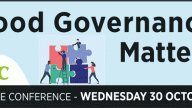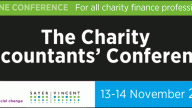Tips for managing your charity’s finances effectively
Caron Bradshaw shares her tips for charity finances.
DSC has published my new book It’s a Nightmare with the Numbers which they commissioned me to write. To celebrate its publication, I wanted to share a few titbits on the building blocks of financial management – call it a taster!
Good financial management is a means to an end and not an end in itself. It helps you get the best out of the precious resources available to you – driving up impact for current and future beneficiaries.
There are many different types of financial management deployed in well run charities. Those who perform the best tend to have the following in their toolbelt: a well put together budgeting process, timely and useful management information, a robust method of forecasting through the year, including a tight rein on cashflow and solid, information and simple reporting to the board of trustees.
Let’s have a brief look at each.
A budget is not an instruction manual
A budget is the financial expression of the things – money, staff, rent, etc. – required to operate. It gives the best guess of how much money will come in from all sources and how much money will be spent in total to deliver your plans. But a budget is your best guess – it is not an instruction manual that dictates every step. And – it’s probably wrong before the ink is even dry! Your charity’s approach should be akin to how you use a sat nav when unforeseen things happen when driving – such as a road being closed unexpectedly, heavy traffic slowing you down or needing to find a garage because someone needs the loo.
Management information is like rear-view mirrors when you drive
Useful timely management information might include a whole range of things: from forecasts and cash flows to wider key performance indicators (KPIs) but what I mean in this term is the financial reports produced by management, often on a monthly or quarterly basis, that provide accounting and financial information to assist your charity in determining how it is performing and how it should be managed. Much of the information included will be historical and will tell you about past performance. Management information is like rear-view mirrors when you drive – it provides detail that helps you process driving conditions and focus on the road ahead.
Use forecasting as a tool
When I think of forecasting, I think about someone gesticulating in front of a map of the British Isles covered in images of clouds, wind and pollen counts! Much like the weather forecast, financial forecasting is about predicting what will happen within a specific period – perhaps a month, a quarter, a year or the duration of a specific project – based on what is already known. Forecasting is a tool which helps you understand how something is performing and whether you need to make changes to ensure successful delivery.
Getting your cash-flow forecast right
A cash-flow forecast contains more detailed information. This is where you should plot expected cash in and cash out for a period of time that the staff or trustees should monitor. It will help you to keep track of whether there is enough cash to pay the bills. I always urge charities that don’t routinely undertake cash-flow forecasting to add it into their toolkit for financial management, because it is so helpful in managing financial risks. This is especially important in times of change, where there is a reasonable degree of risk that your charity will be short of money or where income and/or expenditure is highly variable.
Reporting to your board
Boards have both the advantage and the disadvantage of being able to dip into the day-to-day running of their charity. If you think about a distant young relative, you only see them periodically. Unlike their parents, you see the step changes brought about with time. Although their parents know they are growing and changing, the big differences won’t be as noticeable to them. With trustees, it’s the same. Things that will be less noticeable to staff will jump out to the board. Conversely, things staff are very comfortable with because they are familiar can be scary to a board that isn’t as close to the operations.
These building blocks of financial management are essential for delivering to the people we serve. Financial management is a means to an end and service to the people and causes we are here to address is a very worthy end indeed. All this and more is detailed in my new book by DSC, find out more and pre-order your copy here.


